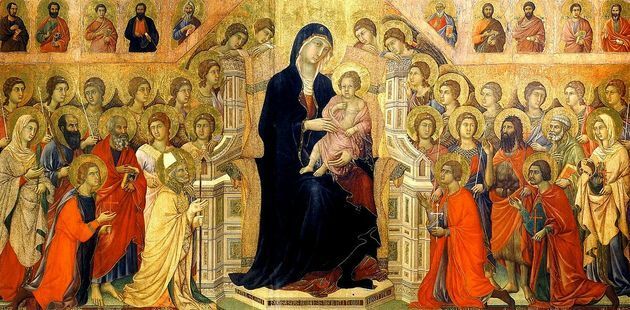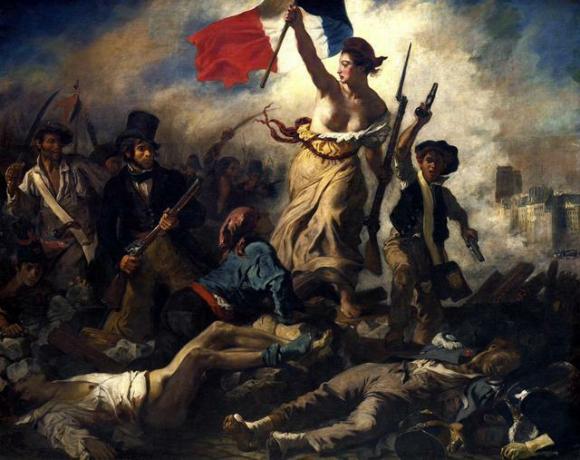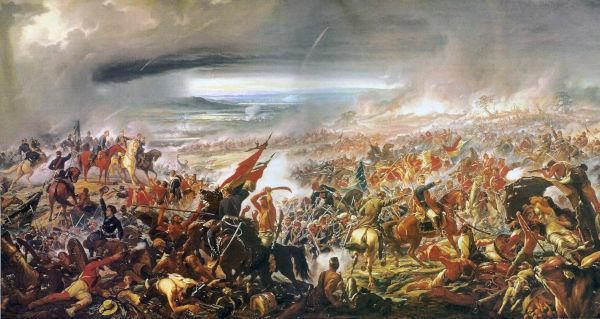The history of art is seen as an area of knowledge that addresses the various artistic manifestations of human beings throughout their trajectory on the planet.
We can say that such manifestations take place through dance, music, theater, visual arts and other expressions that are intended to convey emotions, ideas and worldviews.
Art is related to the first forms of human expression and, depending on the place and historical moment, it manifested itself in different ways.
It is also important to emphasize that this field of knowledge is under constant construction, not being something static, but architected at all times by the various artistic demonstrations that appear in the society.
Anthropologists and historians use art as a powerful tool for understanding peoples, cultures and social organizations.
To make its study and understanding more accessible, art was then organized by periods, movements and strands.
See how art history - especially Western - has been classified.
art in prehistory

Even in the prehistoric period, that is, before the invention of writing, the human being already produced the prehistoric art.
Everything we know about these civilizations has been discovered by researchers through the analysis of objects and paintings from these peoples.
This period of humanity was quite long and, therefore, divided into 3 phases: Lower Paleolithic (500,000 BC). Ç.); Upper Paleolithic (30 thousand BC). C.) and Neolithic (10 thousand a. Ç.).
It was at the time of the Upper Paleolithic that the first artistic expressions were discovered, such as the rock art from the caves of Lascaux (France) and Altamira (Spain).
To learn more about it, read:
- Art in the Paleolithic Period
- Art in the Neolithic Period
art in antiquity

From the invention of writing, we have Antiquity, which goes back to the first expressions of Christian art. At that time, civilizations were heavily marked by symbology.
See the artistic manifestations of the period:
- Mesopotamian art
- Egyptian art
- Celtic and Germanic Art
- Aegean art
- Phoenician Art
- Etruscan art
- greek art
- Roman art
- Early Christian or Early Christian Art
medieval art

THE medieval art it was produced during the Middle Ages, between the 5th and 15th centuries. During this period, the Catholic Church dictated the rules in Europe and all artistic production was linked to religiosity.
The art of that time is divided into:
- Byzantine art
- Romanesque art
- Gothic art
Renaissance art

The Renaissance is understood as the period after the Middle Ages. It emerged in Italy in the 15th century and was a time of great cultural, artistic and intellectual effervescence.
The works produced at that time reflected new yearnings and feelings.
The rebirth brought the valorization and exaltation of the human being (anthropocentrism), contrary to medieval thought, which saw God above all (theocentrism).
To learn more about the period, read also:
- cultural renaissance
- Renaissance Artists
- artistic renaissance
Pre-Columbian Art

Pre-Columbian art is defined as the artistic and cultural production of first peoples of america Spanish before the arrival of Christopher Columbus on the mainland in 1492.
Artistic manifestations of Amerindian people are considered to be pieces with religious or decorative functions, in addition to architectural expressions.
Through the study of pre-Columbian art, it was possible to classify and distinguish the peoples who lived in Latin America and to understand their specific cultures and also in general.
These artistic expressions were:
- inca art
- Aztec art
- Mayan art
Art in the so-called "Contemporary Age"

"Contemporary Age" is understood as the phase that begins with the French Revolution (1789) and extends to the present day.
The main events in this period were: French Revolution, First War, Second War and Cold War.
The artistic aspects that were part of this context at first are:
- neoclassicism
- Romanticism
- Realism
- Impressionism
- Post-Impressionism
Modern Art or Modernism

We consider modern art to be the artistic manifestations that emerged in Europe at the end of the 19th century and extended until the middle of the 20th century, with the end of World War II.
Integrate modernism: painting, sculpture, architecture and literature.
European vanguards
In the context of modernism, several artistic currents emerged.
we give the name of European vanguards to these strands. The word "vanguard" is derived from the French avant-garde, which means "advanced guard", suggesting pioneering in the arts.
These movements are, therefore, innovative manifestations of art and were responsible for a great transformation in the way of expressing and understanding artistic works. Are they:
- Expressionism
- Fauvism
- Cubism
- futurism
- Dadaism
- Surrealism
Contemporary Art or Postmodern Art

The artistic productions produced after World War II are called "contemporary" and today this name remains for current productions, also called postmodern.
This is because the word "contemporary" comes from the Latin word contemporary, which is the union of the terms "with" and "time", meaning "what or who of the current time".
At contemporary art, the concept behind the works took on greater meaning and the globalized social context directly affects the expression of the artists and the enjoyment of the audience.
These manifestations are developed in various fields, such as dance, fashion, music, theater, sculpture, performances, installations, videoart, web art, photography, painting, literature, happenings, objects, textile art, and other expressions hybrids.
To learn more about some of these moves, read:
- Conceptual art
- Arte Povera
- Kinetic Art
- pop art
- Op Art
- Abstract Expressionism
- Minimalism
- Land Art
- Urban art
- Graphite
- body art
History of Art in Brazil

In Brazil, artistic production has been taking place since before the arrival of the Portuguese. Cave paintings of up to 15 thousand years have been found in the state of Piauí, in Serra da Capivara and in other archaeological sites.
The artistic manifestations are diverse in Brazil and accompany the historical and cultural moments in the country. Are they:
- Indigenous Brazilian Art
- Baroque in Brazil
- Neoclassicism in Brazil
- Romanticism, Realism, Naturalism and Symbolism
- Modernism in Brazil (with emphasis on the week of 22)
- Brazilian contemporary art


